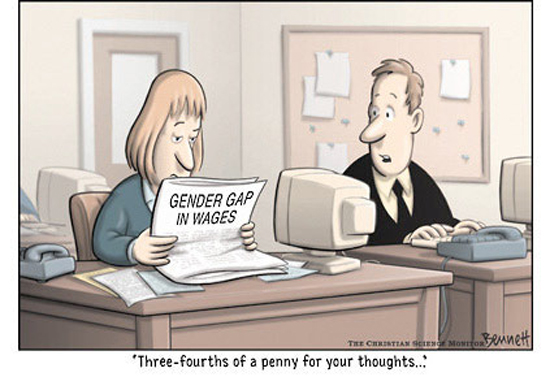The Pink Collar Ghetto Lives! Social Responsibility Part II
0 comment
One of the joys of blogging is that there doesn’t have to be continuity post to post. I, however, have to continue this theme from my last posting.
This question of the extent to which nonprofits should be socially responsible not just through the charitable work that our organizations do but in how we execute that work continue to pound away at me. What I am about to report is no new disparity—and that is what makes it worse: we’ve known about it forever, or so it seems. Yet we are not taking corrective action, or at least not corrective action that is significant enough to be noticeable. I’m talking about the differential in the pay between male and female executive directors, development directors and other senior staff, if not throughout the organization. As an old (and yes, go ahead, read into that all you want and you will be right) feminist, I had hoped we were beyond that.
But we are so clearly not. The Nonprofit Center’s 2005 Wage and Benefit survey of the greater Philadelphia region revealed that, on average, male executive directors earned 42% more than their female counterparts. To a certain extent, this may be due to the fact that females disproportionately lead smaller organizations. But if this isn’t the pink collar effect, I don’t know is! So, pointing to the size of the organization being led as the explanation of the difference in salary is simply reinforcing the problem.
Will a 2008 survey reveal the same disparity? The 2008 Nonprofit Times Salary Survey found that on average male executive directors earned just under $30,000 more than their female counterparts. Recent research found parallel levels of disparity between male and female development directors, even when controlling for education and years of experience in the field. This is what we who enjoy statistics would start seeing as not a random, chance occurrence, but some patterned effect producing this disparity. The answer to this situation is not that female current and aspiring executive directors or development directors should move to western Pennsylvania, or wherever the smallest differential exists. Because even there, their contributions won’t be valued (to the extent that the size of our salary is a reflection of how we are valued by our organization) as they should be.
The answer lies with boards being as socially responsible vis-à-vis their employees as they are vis-à-vis their clients. The answer lies with boards taking control of this situation in a proactive and aggressive way that says loudly and clearly, “This isn’t responsible and we won’t allow it any more.”
The opinions expressed in Nonprofit University Blog are those of writer and do not necessarily reflect the opinion of La Salle University or any other institution or individual.

